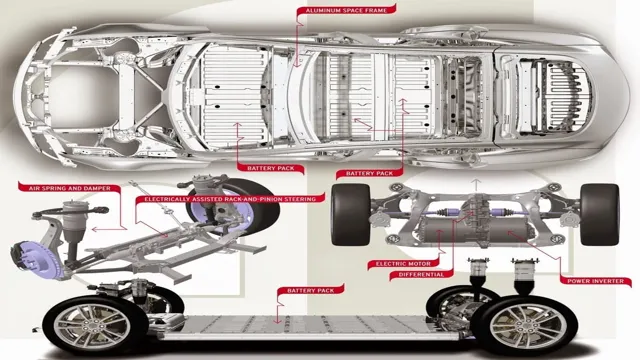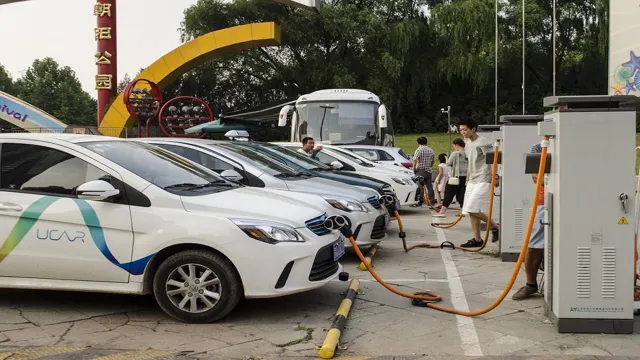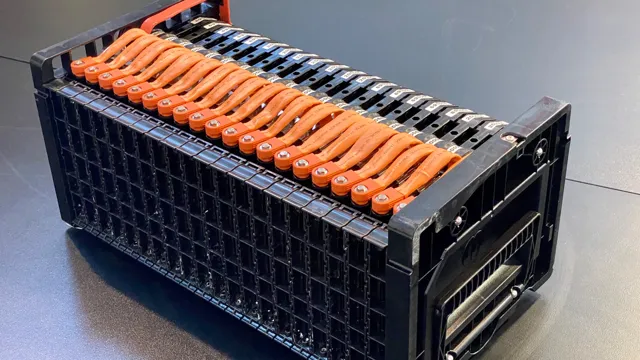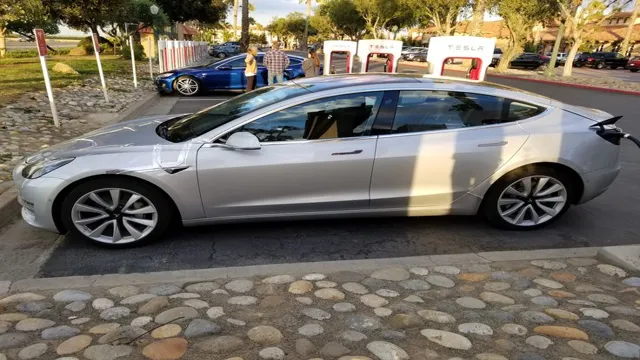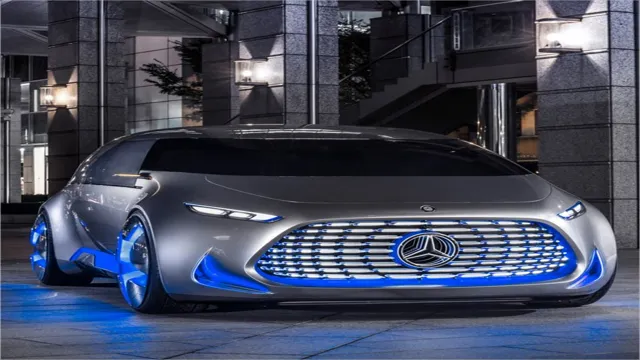Electric Cars Unplugged: Deciphering the Magic of Electric Car Engines
Electric cars have generated buzz in recent years due to their eco-friendliness and cost-saving benefits. However, some people are still uncertain about how these vehicles function, particularly their engines. These electric car engines function in a drastically different way when compared to traditional combustion engines.
They employ electric motors that convert electrical energy into mechanical energy to drive the wheels. Although it may sound simple, Electric cars’ engines carry a lot of complex technology that is essential to their operation. In this blog, we will delve into the intricacies of electric car engines, how they work, and what makes them unique.
Basic Principles
Electric car engines work differently than traditional gasoline engines. Instead of using combustion, electric car engines use electricity to power the car. The process of electric car engines starts with the battery pack.
This battery pack is made up of individual lithium-ion batteries that store the electricity needed to power the car. When you turn the car on, the electricity from the battery pack is sent to an inverter. The inverter will then convert the DC power from the battery to AC power that is usable by the electric motor.
The electric motor is what powers the wheels of the car, using its rotational force to turn it into linear motion. As the driver accelerates, the electric motor sends more power to the wheels, allowing the car to move faster. The electric car engine is much quieter and smoother than traditional gasoline engines, providing a more comfortable and efficient ride for passengers.
Thanks to advancements in technology, electric car engines are becoming more common on the road. And with the increasing interest in reducing carbon emissions and saving money on gas, electric cars are quickly becoming a popular option for eco-conscious drivers.
Electric Motors vs Combustion Engines
Electric Motors vs Combustion Engines: Basic Principles When it comes to producing power in vehicles, there are two main types of engines that come to mind: electric motors and combustion engines. The basic principle of an electric motor is to convert electrical energy into mechanical energy. This is done through the interaction of a magnetic field and electrical current that causes a rotating motion.
On the other hand, a combustion engine operates through a process of internal combustion. Fuel, typically gasoline or diesel, is mixed with air and ignited, creating a controlled explosion in the engine that produces power. While combustion engines have been the primary source of power for vehicles for over a century, electric motors are becoming increasingly popular due to their efficiency, lower emissions, and sustainability.
Both types of engines have their strengths and weaknesses, and ultimately, the choice of which to use will depend on the specific application and use case.
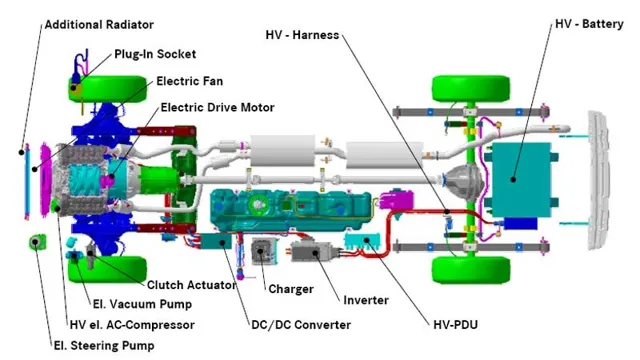
Electricity and Magnetism
Electricity and Magnetism Electricity and magnetism are intrinsic to each other and form an inseparable bond in physics. The basic principle behind electricity is the movement of electric charges, which are negatively charged electrons. Every circuit has a source of electrical energy, which is used to power the circuit and make the electrons move in a particular direction.
On the other hand, magnetism is the result of moving electric charges. The basic principle behind magnetism is that a magnetic field is produced around any moving charge, such as an electron. When a magnet comes in contact with another material, it creates a magnetic field that aligns the electrons within that material and creates a magnetic effect.
This effect can be leveraged to create machines that generate electricity or motors that are powered by electricity. Understanding the basic principles of electricity and magnetism has been a fundamental part of advancing technology in the modern world.
Electric Drive Systems
Electric cars have become a popular alternative to gas-powered vehicles in recent years. But how do electric car engines work? Electric car engines, also known as electric drive systems, use electricity stored in batteries to power an electric motor. The motor then powers the wheels to move the car forward.
The batteries are recharged by plugging the car into an electric power source, such as a charging station or a wall outlet. Electric drive systems have fewer moving parts than gas-powered engines, which means less maintenance and fewer opportunities for breakdowns. Electric cars are also more environmentally friendly, producing zero emissions while driving.
Overall, electric car engines operate by harnessing the power of electricity to provide a clean, efficient, and reliable source of energy for transportation.
Battery Packs and Charging
Battery packs and charging are incredibly important when it comes to electric drive systems. Without an efficient and effective battery pack, an electric vehicle cannot function properly, making charging a vital component of electric vehicle ownership. The battery pack is responsible for storing and releasing energy to power the electric motor, and it also determines the range of the vehicle.
Charging the battery pack is crucial to keep the vehicle running, but it can also be a bit of a challenge for some drivers. That’s because different charging options and speeds can affect the overall charging time and the battery’s lifespan. When it comes to charging an electric vehicle, there are a few options available.
The first is to use a Level 1 charger, which can be plugged into any standard household outlet. While this charging option is convenient, it can be slow, taking anywhere from 8 to 20 hours to fully charge a battery pack. The second option is to use a Level 2 charger, which can be installed at home or at public charging stations.
These chargers offer faster charging times, usually taking about 4 to 8 hours to fully charge a battery pack. Finally, for those in a hurry, some locations offer Level 3 charging, known as DC fast charging. These are more powerful chargers that can charge a battery pack up to 80% in just 30 minutes.
However, these chargers can be more expensive to use and can cause excess wear on the battery pack if used frequently. In conclusion, the battery pack and charging options are essential components of electric drive systems. Understanding how to properly charge a battery pack is necessary for the performance and lifespan of the battery, and it’s important to choose the appropriate charging option based on your driving needs.
By utilizing the right charging option, electric vehicle owners can enjoy the benefits of zero emissions and cost savings that electric vehicles provide.
Electric Motor Control
When it comes to powering electric vehicles, there is nothing more important than the electric drive system. These systems work by converting electrical energy from a battery into mechanical energy that propels the vehicle forward. Essentially, there are three components of an electric drive system: the electric motor, the motor controller, and the battery pack.
The electric motor is responsible for converting the electrical energy into mechanical energy. The motor controller, which is essentially a computer, regulates the flow of electricity to the motor, ensuring that it operates efficiently and precisely. Finally, the battery pack provides the electrical energy that powers the system.
Together, these components work seamlessly to provide a quiet and efficient means of transportation. Additionally, electric drive systems are highly customizable, and can be tailored to fit the unique needs of any vehicle. Whether you’re powering a car, truck, or even a boat, electric drive systems offer a clean and sustainable solution that is sure to meet your needs.
Regenerative Braking
Regenerative braking is a fascinating technology used in electric drive systems that harnesses the kinetic energy of a moving vehicle as it comes to a stop. Typically, when a vehicle brakes, the kinetic energy is wasted as heat and dissipated into the atmosphere. However, with regenerative braking, this energy is converted into electrical energy and stored in the vehicle’s battery, creating an additional source of power.
This makes electric vehicles more efficient and extends their range. In fact, regenerative braking can send as much as 70% of the energy back into the battery. Imagine a giant slingshot, where the harder you pull back the more energy it creates.
Regenerative braking works like that, taking the energy created during braking and transferring it into a power source. As electric vehicles become increasingly popular, and issues of range anxiety and battery depletion are tackled, regenerative braking is becoming ever more important as a key component of electric mobility.
Advantages and Limitations
Electric car engines work by using electricity stored in a battery to power an electric motor, which in turn powers the wheels. Unlike internal combustion engines, electric engines have no exhaust emissions, which makes them a cleaner and greener option for transportation. They also have fewer moving parts, which means they require less maintenance and are more efficient at converting energy into motion.
However, a major limitation of electric engines is their range. Most electric cars have a range of around 200-300 miles before needing to be recharged, which can be a major inconvenience for long-distance drives. Moreover, charging infrastructure is still limited in many parts of the world, which makes charging times longer and less convenient than simply refueling with gasoline.
Despite these limitations, electric cars are becoming increasingly popular as people seek out cleaner and more sustainable modes of transportation.
Lower Environmental Impact
Lower Environmental Impact Lowering environmental impact is crucial, and there are both advantages and limitations to implementing sustainable practices. One of the biggest advantages is reducing the amount of waste generated, which can save money and reduce pollution. Additionally, sustainable practices often require less energy consumption, conserving natural resources while reducing greenhouse gas emissions.
However, there are also limitations to consider, such as the upfront costs of implementing new technologies or practices. Additionally, alternative solutions like renewable energy can require significant space and infrastructure, making them difficult and expensive to implement in some areas. Ultimately, the benefits of reducing environmental impact are clear, but it’s important to carefully weigh the advantages and limitations of different approaches before making changes.
Adopting sustainable practices isn’t always easy, but it’s the right choice for the health of our planet and future generations.
Reduced Maintenance Costs
Reduced Maintenance Costs Reduced maintenance costs is one of the most significant advantages of implementing efficient technology in business operations. By utilizing technology to automate processes, businesses can reduce the frequency of equipment repairs and maintenance needs, which translates to lower costs. Additionally, automated systems can alert technicians of maintenance needs early, preventing catastrophic failures and costly downtime.
Although implementing technology in business processes reduces maintenance costs, it is important to note that it requires an initial investment, which might be out of reach for small businesses. Nonetheless, the long-term ROI is well worth the upfront costs. By reducing maintenance costs, companies can invest those funds into expanding their operations and enhancing their products or services, which will ultimately grow the business.
For small businesses that cannot afford to implement automation technology, they can still reduce maintenance costs by adhering to proper maintenance protocols like scheduled maintenance, regular inspections and training staff on proper equipment use. Overall, the use of technology in business operations offers tremendous advantages in terms of increasing efficiency and lowering costs, which can lead to business growth and development.
Conclusion
In conclusion, electric car engines may seem like a mysterious and complex technology, but at their core, they’re actually quite simple. By harnessing the power of electricity and converting it into mechanical energy, electric cars are able to provide a clean, efficient, and thrilling driving experience. So whether you’re a die-hard gearhead or simply looking for a more sustainable mode of transportation, electric cars are the way to go.
Because let’s face it, in a world where high gas prices and climate change are becoming increasingly pressing issues, driving an electric car is not only practical, it’s downright cool.”
FAQs
What powers an electric car engine?
An electric car engine is powered by a rechargeable battery that stores electricity.
How does the electric car engine produce torque?
The electric car engine produces torque through the use of electromotive force, which turns the motor and generates power.
Can electric car engines be charged while driving?
Currently, electric car engines cannot be charged while driving, but there are plans to develop this technology in the future.
How do electric car engines compare to gas-powered engines in terms of emissions?
Electric car engines produce zero emissions, while gas-powered engines emit harmful pollutants into the air.

